A bronze cauldron with bear-shaped legs, dating back 2000 years, is considered the most fascinating discovery to date, astonishing the world with the extraordinary intelligence of ancient civilizations.
On June 23, 1968, a team of engineers from the People’s Liberation Army was digging a tunnel on the eastern slope of the main peak of Ling San, about 1.5 km southwest of Mancheng County, Baoding, Hebei, when they discovered the Tomb of the Han Dynasty. Subsequently, the Archaeological Institute of the Chinese Academy of Sciences began field excavations. This was the first intact Western Han tomb (considered evidence of the superior intelligence of ancient people) discovered belonging to Prince Jing, Liu Sheng (the Prince of Zhongshan), along with his wife, Lady Dou.
According to historical records, Prince Jing, Liu Sheng suddenly passed away in February of the 4th year of the Yuan Ding era (113 BC), ruling as the Prince of Zhongshan for 42 years. His age at death is unclear, and his wife also died shortly thereafter. Liu Sheng was known for his lustful nature and love of drinking, having 22 children and 120 grandchildren.
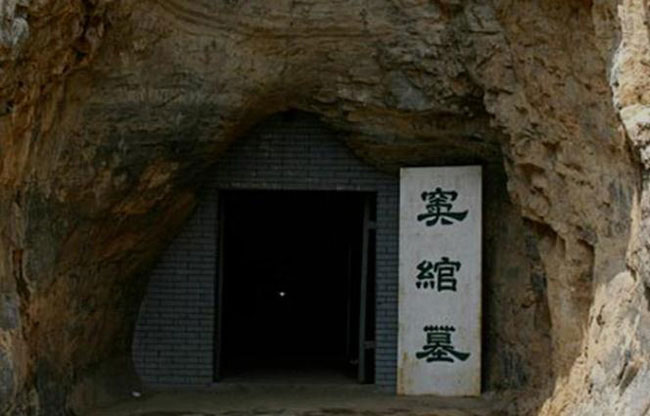
The tomb of Prince Jing, Liu Sheng (the Prince of Zhongshan) is an extremely important discovery for the field of archaeology in China during the Western Han Dynasty.
Both individuals were buried in two chambers within the mountainside. Each chamber features two side rooms for storage, one rear room for the coffin, and a large central room with a tiled roof and wooden supports that have collapsed. The bodies of Prince Jing and his wife were wrapped in elaborate garments adorned with jade, each containing over 2,000 pieces of jade. The tomb contained more than 2,700 artifacts along with valuable cultural relics. This is a significant discovery for archaeology in China during the Western Han period.
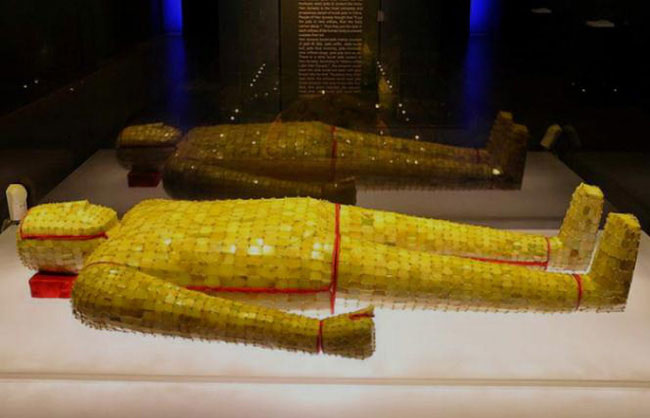
The jade burial garments of Prince Jing, Liu Sheng (the Prince of Zhongshan).
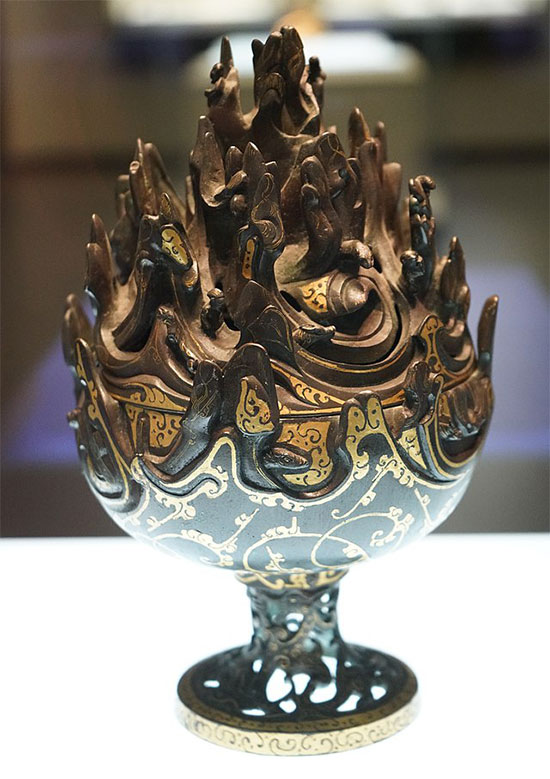
Gold-plated bronze incense burner from the Western Han Dynasty, 2nd century BC.
In addition to the world-renowned cultural relics such as the gold-plated bronze incense burner from the 2nd century BC and the jade burial garments, a large number of food and cooking-related items were excavated from this tomb, including pots, kettles, pans, bowls, rice containers, and various types of wine and boats. These items are intricately designed and exhibit top-notch durability and craftsmanship.
Among them, the bronze cauldron with bear legs is regarded as the most fascinating discovery in the world, a pressure cooker dating back 2000 years. The bronze cauldron is elliptical in shape, standing 18.1 cm tall, with a diameter of 17.2 cm and a belly diameter of 20 cm, closely resembling modern pressure cookers. Its three legs are carved in the shape of bears squatting and grinning, and the lid features four small animal-shaped supports that securely lock the lid in place. The overall appearance is both exquisite and charming.
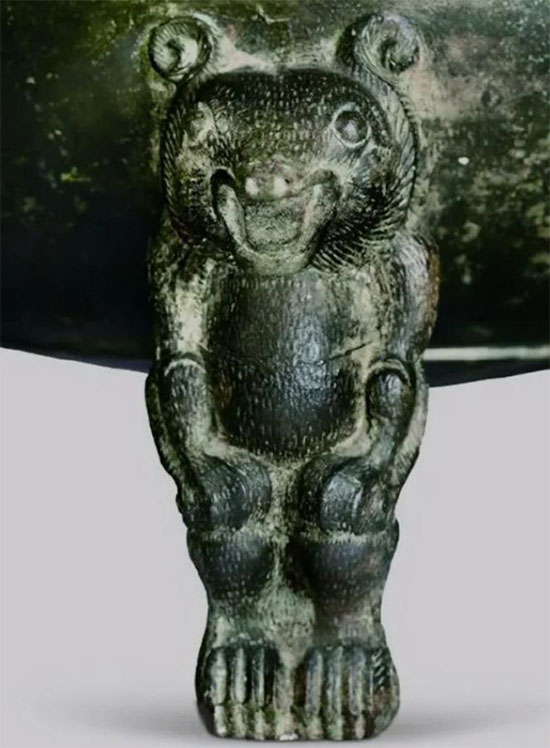
The three legs of the bronze cauldron carved in the shape of bears squatting and grinning.
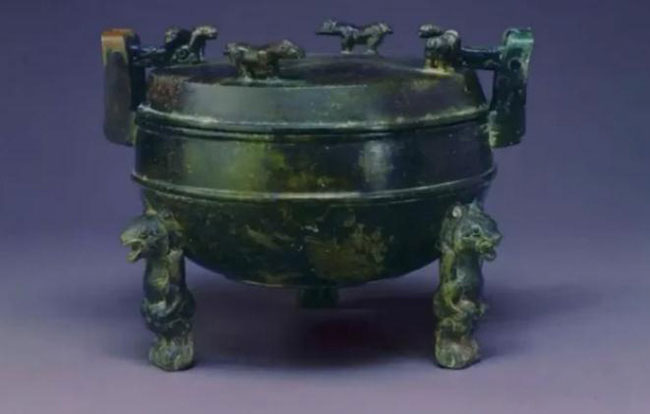
This bronze cauldron with bear legs embodies the extraordinary intelligence of ancient people.
Xu Shen wrote in “Shuo Wen Jie Zi” (a Chinese dictionary from the early 2nd century Han Dynasty) that: “The bronze cauldron has three legs and two ears, a treasure of five flavors.” This implies that the shape of the bronze cauldron, with its three legs and two ears, serves its most primitive function to cook food and hold meat and spices. Its role is equivalent to that of modern pressure cookers. Therefore, this bronze cauldron with bear legs is a testament to the incredible intelligence of ancient civilizations.
In simple terms, the so-called “pressure cooker” refers to a bronze item excavated from the tomb of the Prince of Zhongshan. It has four mythical beasts at its base; the height of the cauldron is 18.1 cm, with a belly diameter of 19.6 cm. The cauldron has an elliptical shape. The supports of the cauldron are decorated with four mythical creatures in a squatting position.
At first glance, the shapes of the four creatures may seem unremarkable. However, what surprises people is the operational mechanism of the cauldron.
On either side of the cauldron are two rectangular ears. Its lid resembles an inverted bowl, with mythical beasts standing on top, spaced apart. These details help secure the lid tightly, preventing steam from escaping. This operational mechanism is quite similar to that of modern pressure cookers.
According to historical accounts, the Han emperors had a massive system for managing dining services. In addition to officials specifically managing various types of food, there were, of course, a large number of luxurious and extravagant dining utensils.
According to the introduction in the “Encyclopedia,” pressure cookers were originally called “paping pans,” invented by a French doctor in 1681. Initially, it was a sterilization device. However, when comparing timelines, it can be seen that the cauldron of the Prince of Zhongshan predates modern civilization by a thousand years.
On this matter, even experts find it amusing that who would have thought that the “pressure cooker” had appeared over 2,000 years ago? Simultaneously, from another perspective, experts express admiration for the extraordinary intelligence of ancient people.


















































